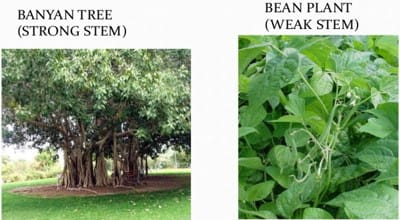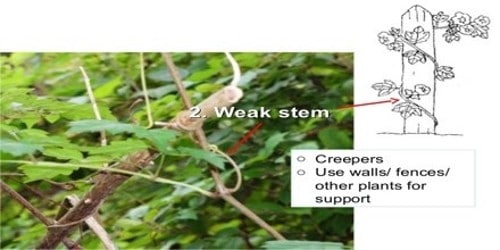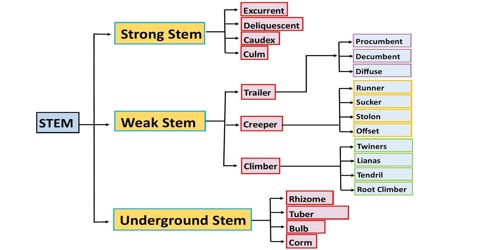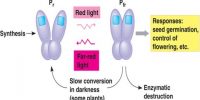Classifications of Stem
Observe the stems of a mango tree, a bottle gourd plant and a coconut tree. Some are strong, some are weak and some has no branches. From this, it might be understood that stems can be of several types. However, stems can be primarily divided into two groups. e.g. strong stems and weak stem.
1. Strong stem– This type of stems are strong and keep the plant erect firmly on ground e.g. mango, berry, coconut, palm, etc. Some of these stems have branches and some do not.
(a) Caudex: The stem is erect, strong and has a crown of leaves at the top. Examples- coconut, palm, and betel nut.
(b) Branched stem
- Excurrent: This type of stems develops branches in such a way that they become a cone-like structure and look like temples. The branches at the lower part of the tree are long and the branches at the upper part become increasingly shorter. The key axis show continues growth and the lateral branches develop commonly giving a conical appearance to the tree. E.g. Polyalthia longifolia, Casuarina, etc. The whole tree takes the shape of a temple as it narrows down gradually from the bottom to the top. Examples of such stem include willow oak, tulip poplar, sweetgum, and southern magnolia.
- Deliquescent: The stems of some trees are short and strong and the branches and cub branches are arranged from the stems in such a way that the trees look like domes. The growth of lateral branch is more vigorous than that of main axis. The tree has a rounded or spreading appearance. This types of stems arc found in mango, jack fruit and berry trees.
- Culm: In these erect and unbranched stems nodes and internodes are very distinct. Adventitious roots grow from the nodes. Erect stems with distinct nodes and internodes. And stem shows a jointed appearance. Examples of such stems include bamboo, sugar cane, etc. In certain cases, the stems could be either void or solid.
- Caudex: It is an unbranched, stout, Cylindrical stem, marked with scars of fallen leaves. E.g., Cocos.

2. Weak stem: Plants with this type of stem cannot stand upright and they grow either on the ground or creep on machan. Usually, these stems contain no timber in them and that is why they are so weak and feeble. Some of them are trailers, some are creepers or climbers.
- Creepers: These Stems grow horizontally on the soil surface and produce fibrous roots from each node. The plant grows horizontally on the ground and gives off root at each node. Examples- doob grass (Durba ), oxalis (amruli), etc.
- Trailer: These stems grow and spread parallel to the soil surface but do not produce roots from nodes. It is a weak stem that spreads over the surface of the ground without rooting at the nodes. Examples – Basella (Puin), peas, etc.
- Climber: These are weak stems that grow upward with the help of some forms of support. This weak stem climbs support by means of some special structure. help plant to climb on any neighboring objects. Examples- betel leaf, bean, etc.

3. Underground Stem
Many plants produce underground stems for perennation and food storage. They produce aerial shoots per annum. Its major functions are; Storage of food, Perennation, and vegetative propagation.














